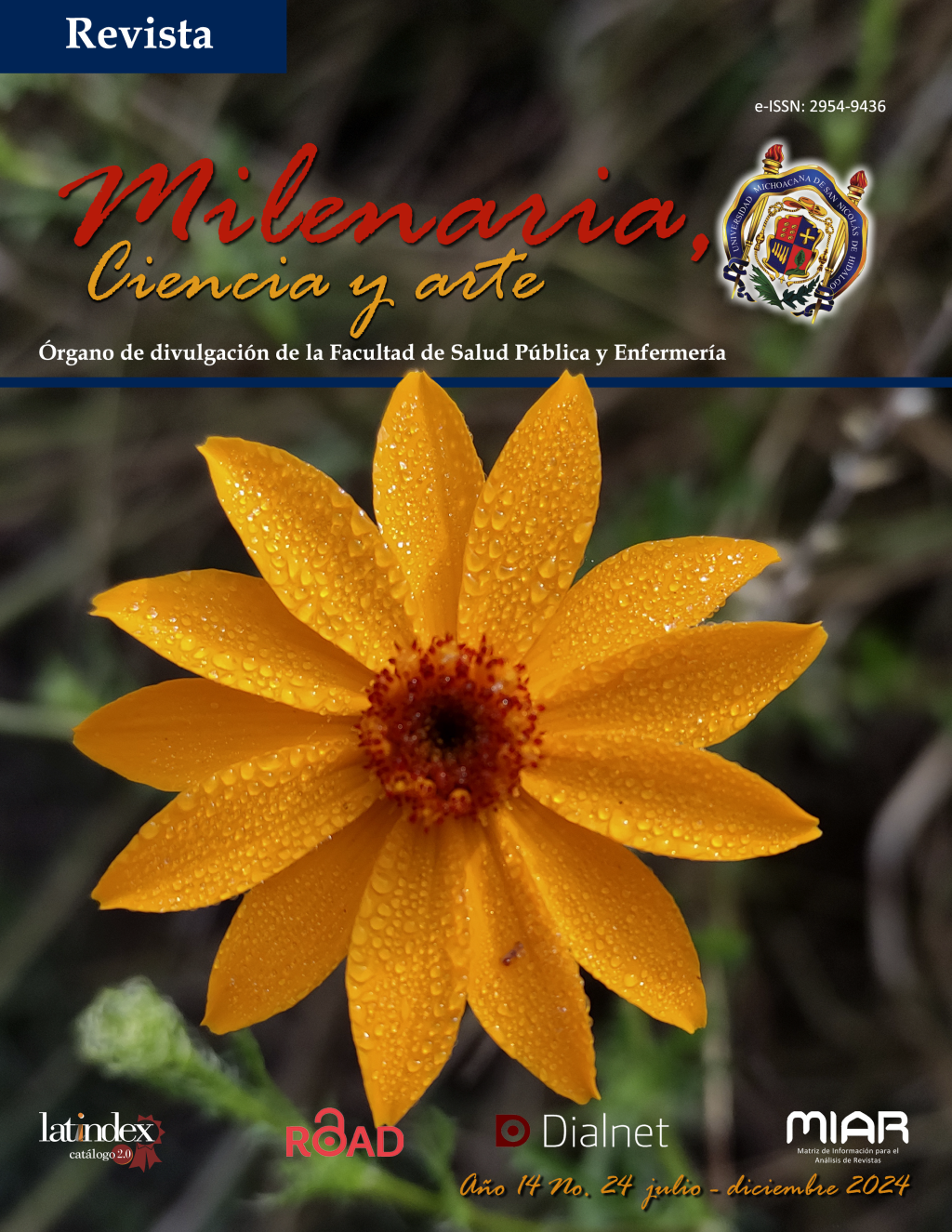Haematococcus pluvialis an alternative source of astaxanthin
DOI:
https://doi.org/10.35830/mcya.vi24.489Keywords:
Haematococcus pluvialis, astaxanthin, antioxidantsAbstract
Nowadays, the consumption of antioxidants is quite common because it helps to prevent or neutralize the effect of free radicals that can cause various diseases. A rich source of these antioxidants is the microalgae Haematococcus pluvialis, which is of great biotechnological and economic interest due to its high antioxidant content, including astaxanthin, which has taken on great importance and biotechnological application attributed for its health benefits when consumed, as it has a high antioxidant capacity, helps regulate blood sugar levels, contributes to the prevention of cardiovascular diseases and can help treat or prevent cancer and contributes to the prevention of cardiovascular diseases. It can help treat or prevent cancer without causing adverse effects on human health, for its benefits it is widely used in the food, beverage, cosmetics, pharmaceutical, and nutraceutical industries to obtain new products enriched with astaxanthin. Considering the relevance of astaxanthin production, the effect of growth factors in the green phase on the antioxidant activity of cell extracts of the microalga H. pluvialis is currently being evaluated.
Downloads
References
Ambati R. R., Sindhuja H. N., Shylaja M. D., Kadimi U. S., Ravi S., Gokare A. R. (2013). Effective inhibition of skin cancer, tyrosinase, and antioxidative properties by astaxanthin and astaxanthin esters from the green alga Haematococcus pluvialis. Journal of Agricultural and Food Chemistry, 61(16), 3842-3851. https://doi.org/10.1021/jf304609j
Ambati R. R., Phang S. M., Ravi S., Aswathanarayana R. G. (2014). Astaxanthin: sources, extraction, stability, biological activities and its commercial applications--a review. Mar Drugs, 7;12(1), 128-52. https://doi.org/10.3390/md12010128
Coronado H., M., Vega y León S., Gutiérrez T. R., Vázquez F. M., Radilla V. C. (2015). Antioxidantes: perspectiva actual para la salud humana. Revista chilena de nutrición, 42(2), 206-212. https://doi.org/10.4067/S0717-75182015000200014
Davinelli S., Nielsen M. E., Scapagnini G. (2018). Astaxanthin in skin health, repair, and disease: a comprehensive review. Nutrients, 10(4), 522. https://doi.org/10.3390/nu10040522
Fábregas J., Domínguez A., Regueiro M., Otero A. (2000). Optimization of culture medium for the continuous cultivation of the microalga Haematococcus pluvialis. Applied Microbiology and Biotechnollogy, 53, 530–535. https://doi.org/10.1007/s002530051652
Harker M., Tsavalos A. J., Young A. J. (1995). Use of response surface methodology to optimize carotenogenesis in the microalga, Haematococcus pluvialis. Journal of Applied Phycology, 7(4), 399–406. https://dx.doi.org/10.1007/bf00003797
Higuera-Ciapara I., Félix-Valenzuela L., Goycoolea F. M. (2006). Astaxanthin: a review of its chemistry and applications. Critical Reviews in Food Science and Nutrition, 46:2, 185-196. https://doi.org/10.1080/10408690590957188
Hussein G., Nakamura M., Zhao Q., Iguchi T., Goto H., Sankawa U., Watanabe H. (2005). Antihypertensive and neuroprotective effects of astaxanthin in experimental animals. Biol Pharm Bull, 28(1), 47-52. https://doi.org/10.1248/bpb.28.47
Kuan S. K., Sze Y. L., Chien W. O., Xiaoting F., Xiaoling M., Tau C. L., Pau L. S. (2019). Recent advances in biorefinery of astaxanthin from Haematococcus pluvialis. Bioresource Technology, 288. https://doi.org/10.1016/j.biortech.2019.121606
Oslan S. N. H., Shoparwe N. F., Yusoff A. H., Rahim A. A., Chang C. S., Tan J. S., Oslan S. N., Arumugam K., Ariff A. B., Sulaiman A. Z. (2021). A review on Haematococcus pluvialis bioprocess optimization of green and red stage culture conditions for the production of natural astaxanthin. Biomolecules, 11;256. https://doi.org/10.3390/biom11020256
Shah M., Mahfuzur R., Liang Y., Cheng J. J., Daroch M. (2016). Astaxanthin-producing green microalga Haematococcus pluvialis: From Single Cell to High Value Commercial Products. Frontiers in Plant Science, 7. https://doi.org/10.3389/fpls.2016.00531
Xin L., Xiaoqian W., Chuanlan D., Shasha Y., Zhengquan G., Chaowen X., Spiros N. A., Guangce W., Jian L. (2020). Biotechnological production of astaxanthin from the microalga Haematococcus pluvialis. Biotechnology Advances, 43. https://doi.org/10.1016/j.biotechadv.2020.107602
Yuanyuan R., Jinquan D., Junchao H., Zhaoming W., Lanbo Y., Yuge B., Feng Ch. (2021). Using green alga Haematococcus pluvialis for astaxanthin and lipid co-production: Advances and outlook. Bioresource Technology, 340. https://doi.org/10.1016/j.biortech.2021.125736
Published
How to Cite
Issue
Section
License
Copyright (c) 2024 Milenaria, Ciencia y arte

This work is licensed under a Creative Commons Attribution-NonCommercial-ShareAlike 4.0 International License.





